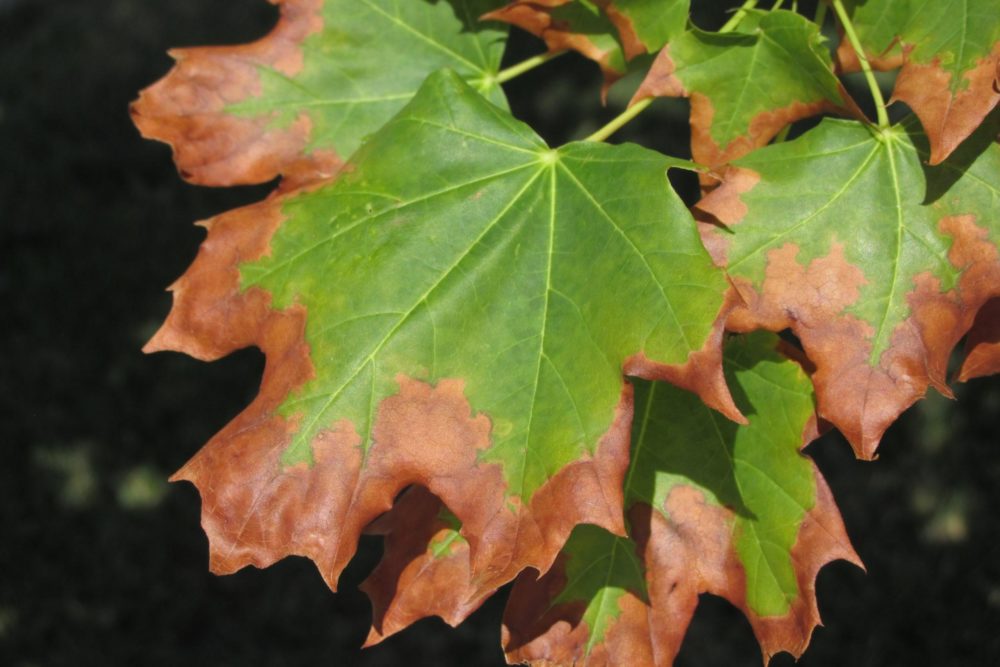Drive anywhere along the Front Range and you’ll see it: trees and shrubs struggling against yet another summer of drought. The answer isn’t to pull out our landscape plants and replace them with tons of river rock or gravel. We simply need to take much better care of of our woody plants. Fortunately, it really isn’t that hard!
In my own travels this summer, I’ve been saddened time and again to see perfectly fine trees and shrubs succumbing to the “plant-it-and-walk-away” school of maintenance. It’s so unnecessary!
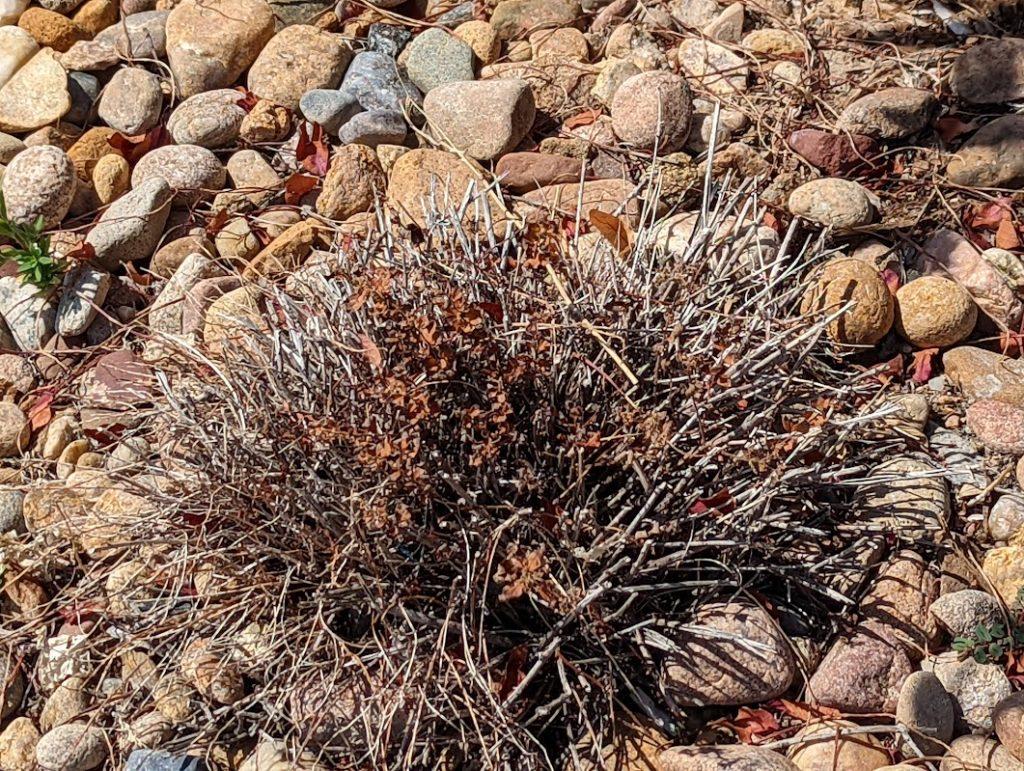
Which brings me to the point of this blog. Lots of times, our plants really do try to “talk” to us… by making it clear that something is very wrong. And there’s one particular message that I’ve been getting lately.
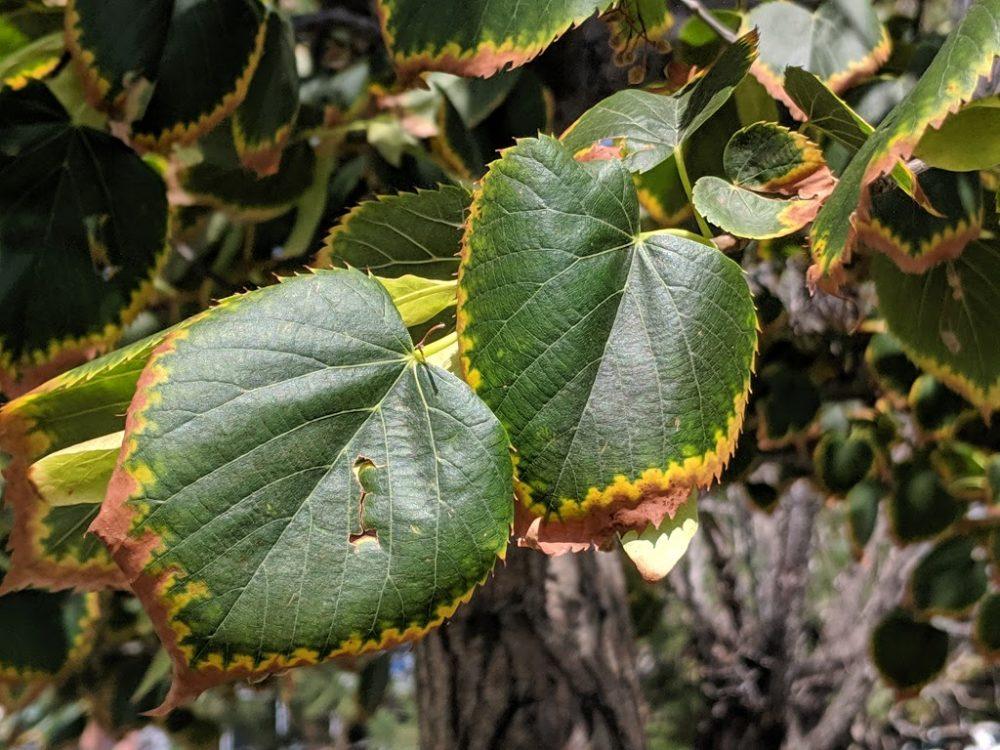
It’s not a disease or an insect. Patterns like the one seen here and at the top of this blog are signs of leaf scorch. The tree can’t get moisture to the outer edges of the leaves, so bit by bit, that tissue is dying. The question is why. The drought certainly plays a big role, but it’s not always that simple. We as gardeners and caretakers of our landscapes usually play a role, too.
Let’s focus on the roots
The folks I talk to at Tagawas know if their landscape is getting watered, but routinely don’t know how much water is being applied. That information is hugely important because it directly effects how well that plant’s root system can perform. And the performance of the root system will make or break a plant! Many of the problems we’re seeing now with our trees and shrubs can be traced directly back to their failing roots.
Newly-planted trees and shrubs need some extra T.L.C. for at least two growing seasons, including the winter in between. That T.L.C. includes knowing that we’re applying enough moisture to soak down to the bottom of that young root system. “Sips” of water that moisten only an inch or two of soil aren’t nearly enough to maintain a root system big enough and healthy enough to support that plant during hot weather.
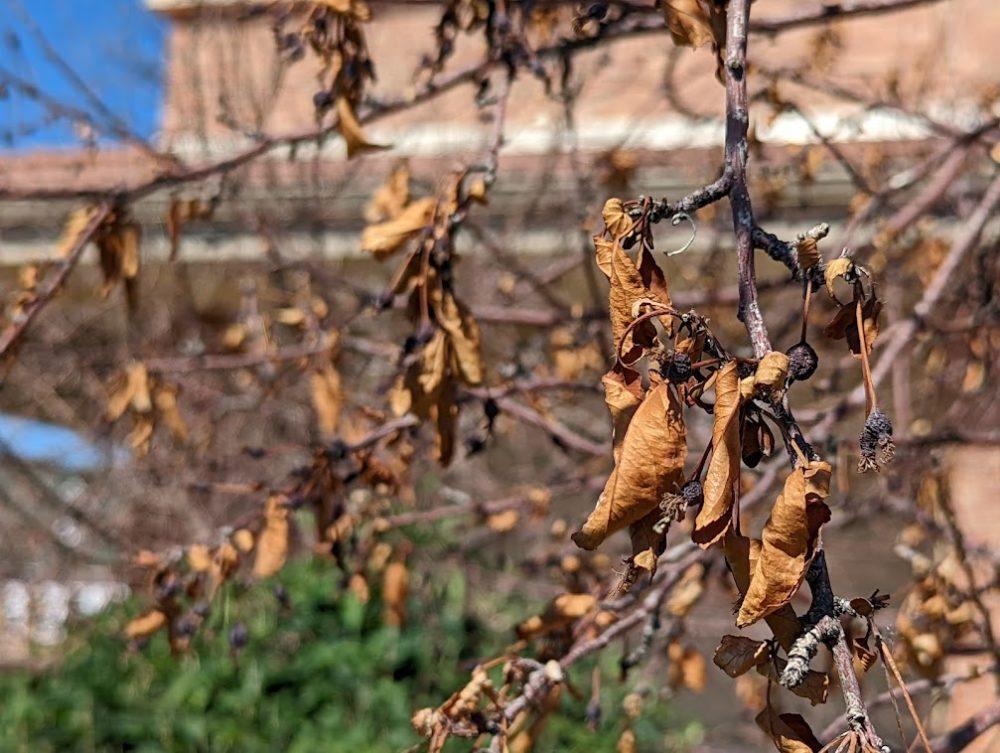
As the root system fails, the leaves and limbs follow. The entire plant may not be far behind. So let’s look at what we can do now to make our plants’ root systems the best they can be going into fall and through the winter.
How to get the most out of your watering budget
Water is increasingly expensive, so making that water count, especially when watering restrictions are in place, is critical. For trees and shrubs (and perennials, too!), apply enough water to soak down to the bottom of the plant’s root system, however deep that is. If you’re not sure how much water your watering technique is providing, here’s an easy way to check.
To determine how much water your sprinkling device is applying, set the spray at the appropriate flow to cover the root zone, then catch that same amount of water in a bucket for one minute. Knowing the gallons per minute with that specific set-up will help you determine how long to water.
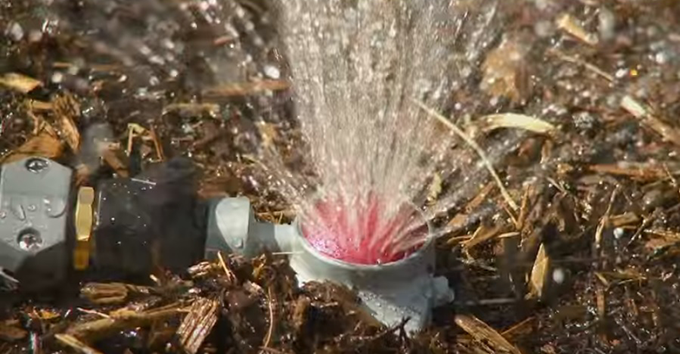
For newer trees that have been in the ground for two seasons or less, water them individually from the base of the trunk out to the “drip line,” just below the outermost branches. Apply the water slowly, ideally with a small sprinkler so the water has time to soak in.
During the summer and early fall, young trees should get ten gallons of water for every one inch of diameter halfway up the trunk with every watering. Think about that! And think about how much your trees and shrubs are getting if, for example, they’re being watered only when the lawn sprinklers are on. As long as hot weather persists, the newer trees and shrubs should be watered individually several times a week.
During a drought, it’s also wise to prioritize which more mature trees and shrubs are the most important elements of your landscape, and give them extra watering T.L.C. too, whenever possible.
As we slide into late-summer and fall, watering is critically important to send the root systems of trees and shrubs into winter in good health.
And don’t forget the mulch!
Applying mulch near the base of newer trees and shrubs is a great way to maintain the moisture we give to our trees and shrubs. Organic mulch such as shredded bark or pine needles will allow water and air to penetrate without packing down when they get wet. If the existing mulch has begun to degrade, refresh it with new mulch.
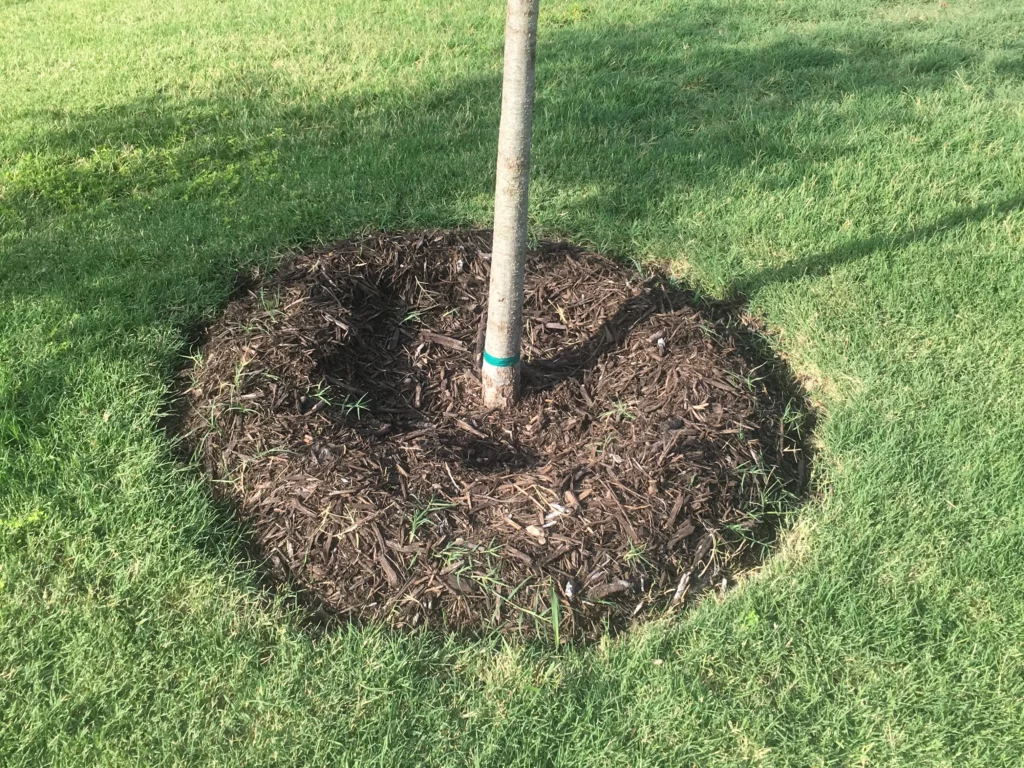
Mound the mulch about three inches deep over the root zone . Be sure to keep the mulch at least five inches away from the tree so the base of the trunk isn’t staying wet.
With colder temperatures, focus on winter watering
The forecasters are telling us this drought isn’t going away anytime soon, so winter watering is going to be critical. The basic guidelines are simple: Every month during the winter, unless we’ve had a soaking snow storm, we need to water our more vulnerable plants… trees, shrubs and perennials.
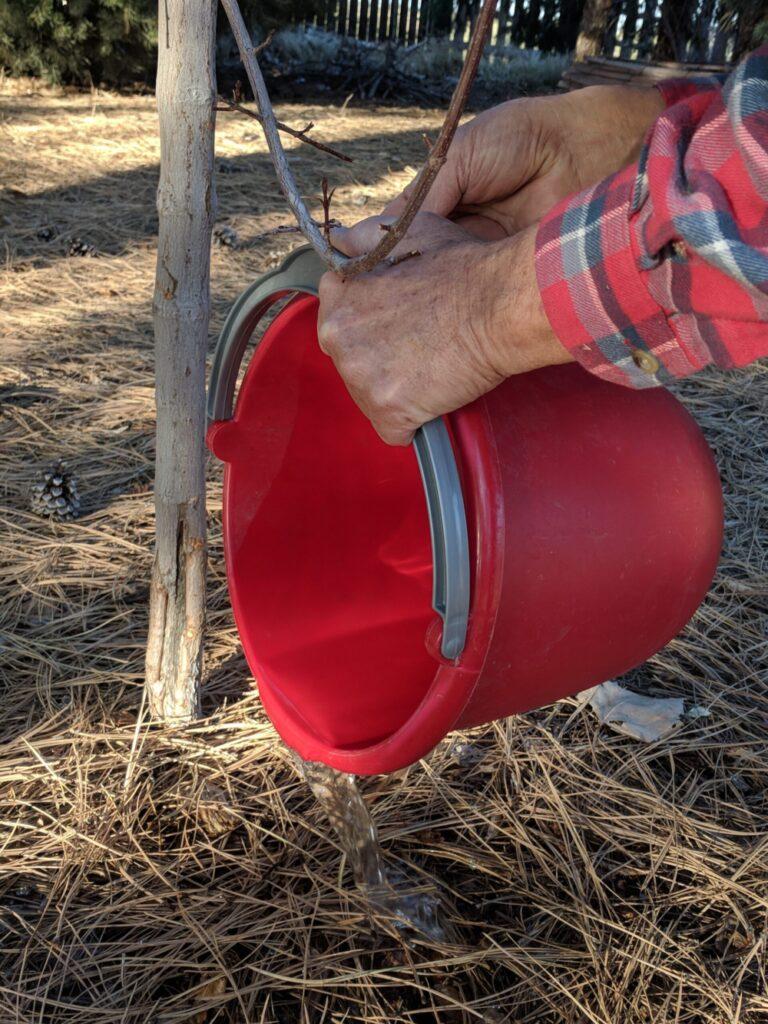
“Soaking” means storms that have delivered at least one inch of moisture. Water with a bucket, a hose-end sprinkler… what ever works best for you. (If you use a hose, just be sure to drain the hose and detach it from the spigot afterwards.) Water at mid-day when the sun is out. Use a screwdriver inserted into the soil to make sure the ground isn’t frozen.
By protecting the root systems of our plants, we’re going a long way toward helping those plants survive and thrive once the heat sets in again next summer.
